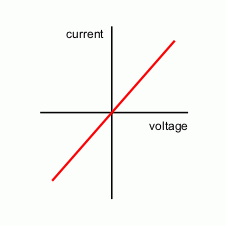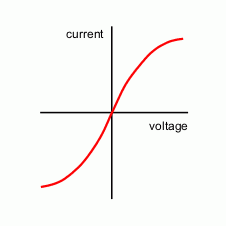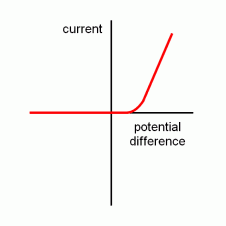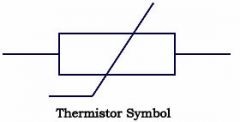![]()
![]()
![]()
Use LEFT and RIGHT arrow keys to navigate between flashcards;
Use UP and DOWN arrow keys to flip the card;
H to show hint;
A reads text to speech;
45 Cards in this Set
- Front
- Back
|
Current
|
the rate of flow of charge
|
|
|
Voltage
|
(potential difference) the driving force that pushes the current around the circuit - 'electrical push'
|
|
|
Resistance
|
anything in a circuit which slows down the flow
|
|
|
what is voltage measured in?
|
volts (V)
|
|
|
what is resistance measured in?
|
Ohms (Ω)
|
|
|
if there is no voltage across a component...
|
...the current will not flow through the component
|
|
|
what is the relationship between voltage, current and resistance?
|
-voltage pushes current around
-resistance opposes it -relative sizes of resistance and voltage decide the size of the current |
|
|
if you increase the voltage...
|
...more current will flow
|
|
|
if you increase the resistance...
|
...less current will flow/more voltage is needed for the same current
|
|
|
potential difference
|
the energy transferred per unit of charge passed
|
|
|
when electrons/charge goes through a change in potential difference...
|
...energy is released/transferred
|
|
|
1 volt =
|
1 joule per coulomb
|
|
|
a battery with bigger voltage will...
|
...supply more energy per coulomb of charge which flows and therefore, more energy will be lost over the circuit
|
|
|
what happens to current at a junction?
|
it is conserved - no current is lost
|
|
|
where must the ammeter be placed when measuring the current flowing through a component?
|
in series - connected in line with the component
|
|
|
where must the voltmeter be placed when measuring the potential difference across a component?
|
placed in parallel to the component being tested - not around any other component
|
|
|
what is a V-I graph?
|
a Voltage-Current graph
|
|
|
what happens when you vary the resistance in the variable resistor?
|
the current alters
|
|
|
what does a V-I graph of a fixed resistor look like?
|

a straight line with a positive correlation
|
|
|
why?
|
the current through the resistor is proportional to the voltage - linear graph
|
|
|
what does a V-I graph of a filament look like?
|

a curve which is flatter at each end and goes through (0,0) - x cubed graph
|
|
|
why?
|
the temperature increases of the filament and so, the resistance increases
|
|
|
what does a V-I graph of a diode look like?
|

it increases at (0,0) - exponential graph
|
|
|
why?
|
the diode only lets current flow one way
|
|
|
what is an LDR?
|
a light dependant resistor is a special type of resistor which changes its resistance depending on how much light there is
|
|
|
what is the symbol for an LDR?
|

|
|
|
in bright light...
|
...resistance falls
|
|
|
in darkness...
|
....resistance is at its highest
|
|
|
what is a thermistor?
|
a special type of resistor which is dependant on temprature
|
|
|
what is the symbol for a thermistor?
|

|
|
|
in hot conditions...
|
...resistance falls
|
|
|
in cool conditions...
|
....resistance increases
|
|
|
why do resistors get hot?
|
because the electric current in the resistor causes an energy transfer of heat
|
|
|
what causes the energy transfer?
|
electrons collide with the tightly packed ions which are formed in a lattice in the resistor which in turn gives the ions extra energy which is released as heat
|
|
|
what does the heating effect cause?
|
an increase in the resistance
|
|
|
what does the increase in resistance cause?
|
more current to flow or more voltage supply to maintain the current
|
|
|
this heating effect can make circuits _____ efficient
|
less
|
|
|
why?
|
some energy is wasted as heat
|
|
|
what else can it cause?
|
components can melt and cause the circuit to stop working or not work properly
|
|
|
what are fuses?
|
they protect circuit components by melting and breaking when the current gets too high
|
|
|
what are 2 things is this heating effect used in as an advantage?
|
toasters and light bulbs
|
|
|
what is electrical power?
|
the rate at which an appliance transfers energy
|
|
|
where does the energy come from?
|
the current flowing through it
|
|
|
An appliance with a high rating will draw a _____ current from the supply
|
large
|
|
|
what is power measured in?
|
Watts (W)
|

